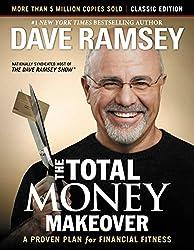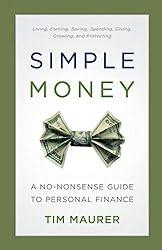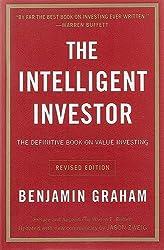
Photo by Karolina Grabowska on Pexels.com
" data-orig-size="867,1300" data-image-title="girl reading a book" data-orig-file="https://smallivy.files.wordpress.com/2017/10/pexels-photo-5852312.jpeg" data-image-description="" data-image-meta="{"aperture":"0","credit":"","camera":"","caption":"","created_timestamp":"0","copyright":"","focal_length":"0","iso":"0","shutter_speed":"0","title":"","orientation":"0"}" data-medium-file="https://smallivy.files.wordpress.com/2017/10/pexels-photo-5852312.jpeg?w=200" data-permalink="https://smallivy.com/2023/09/25/is-it-possible-to-save-for-college/pexels-photo-5852312/" alt="" class="wp-image-23499" data-large-file="https://smallivy.files.wordpress.com/2017/10/pexels-photo-5852312.jpeg?w=683" />Photo by Karolina Grabowska on Pexels.comAbout 22 years ago I sat down and predicted the growth of my son’s college savings account. I was planning to put away $2,000 each year into an Educational Savings Account (ESA). Using an investment calculator, and using an estimate of a 12% return (which was a little optimistic given the average return for the stock markets), I predicted I’d have about $140,000 by the time my son was ready to go to college. With in-state tuition at about $12,000 per year, plus money for food and housing, I was figuring a cost of about $30,000 per year, so the ESA would at least get him through undergraduate school. He could then do research/teaching/etc. to help fund grad school if he went, and hopefully get out debt-free or fairly close. That was the plan.
(Note, this site contains affiliate links. As an Amazon Associate I earn from qualifying purchases. When you click on an affiliate link and buy something, The Small Investor will get a small commission for the referral. You are charged nothing extra for the purchase. This helps keep The Small Investor going and free. I don’t recommend any products I do not fully support. If you would like to help but don’t see anything you need, feel free to visit Amazon through this link and buy whatever you wish. The Small Investor will get a small commission when you do, again at no cost to you.)

Check out my newest book, Investing to Win. This book provides all of the information you’ll need to learn to invest and maximize your returns. This is the product of 40 years of investing and learning through experience. I honestly believe this is the most effective way to invest.
Unfortunately, then came the 2001-2003 stock market, where returns were low or negative. Things finally picked up after the 2003 tax cuts (yes, tax cuts do spur the economy, despite what some liberal pundits will tell you), but then stocks fell during the 2008 housing market crash. Since that point things grew at a modest pace, until Trump was elected, from which point on things have been on fire. As of 2017, despite the fairly good markets from 2009 – 2016, and the great market over the last 10 months, my annualized rate-of-return had been around 3.5% instead of 12%.
So, sitting there with about two years until the first tuition bills came in, my son’s account had a little over $52,000 in it at that point, instead of the $108,000 I predicted. This was enough to pay for about two years’-worth of college expenses, but not four. Alternatively, it was enough to pay for tuition, but not for room-and-board. That left me with a big dilemma:
How should I invest for the next couple of years, if at all?




Shop Personal Finance and Business Books
What to do?
With less than two years remaining, if I absolutely needed the money in two years, the only option would have been to put it all into bank CDs. One cannot predict what the markets will do over such a short period of time, and they have about a 1/3 chance of being lower in two years than they were that day. There was a small chance, maybe one in ten, that they would be 25% lower or more if I had left the money invested, meaning I may have had only around $39,000 when tuition bills came due. Then again, if the markets did rally, giving us great returns over those next couple of years, I could have gotten 20% returns and have almost $75,000 when the first tuition bill arrived.
Note that my original predictions when I first started investing for him assumed I would stay fully invested in stocks the whole time. That was probably a bad assumption to have made given the risk of doing so during the last couple of years before he would need the money. A safer plan would have been to start paring back investments when my son was around 14, putting some into safer cash-generating assets like bonds, then even converting some of the money into cash assets like bank CDs as the day or reckoning arrived. As it was, planning to stay invested fully in stocks to reap those potential high returns, I was definitely taking a risk.
But I kind of had an ace up my sleeve: Rather than just putting the $2000 I was allowed to invest in the educational savings account (ESA), I was investing in a taxable brokerage account all along as well. This was money I was using for things like home repairs and replacing used cars as they wore out, but it could also be tapped in a pinch to help pay for tuition. This gave me flexibility and bought down risk that otherwise would have forced me to accept lower returns.
Having this backup plan allowed me to take more risks with the chance of higher rewards. If things went badly, I had other funds to pull from. My son could have also paid for more of his school (he’d be in the same boat as most students since parents don’t seem to be putting away money for college in any serious way in general). I could also contribute some money from my salary as many parents do and just go through some lean years. Bottom line is that the consequences of taking a risk weren’t the end of the world, so I could afford to take some risk.
Really, it is absurd that investors are only able to put away $2000 per year into an ESA when college is only 18 years away (and this is only if you start investing right away) and when college costs are so high. Unfortunately, this program was never indexed for inflation and was kind of forgotten since by Congress. Other programs like 529 plans were available that allowed more money to be invested. States liked these plans because they drew students to their colleges. Financial firms liked them because they got to manage the money and get a big pay-out. The humble ESA was ignored because it didn’t have lobbyists.

How has it worked out?
Things actually worked out better than expected. Once our son got into college, we were able to cover his tuition and room and board from the account. It was at about $60,000 when he started college, but the we stayed invested and the investment returns actually kept up with costs for the first couple of years. Once he started classes I shifted from mainly growth stocks to growth and income funds, including some buy-write funds (funds that buy stocks and write covered calls on them to generate income).
He also graduated undergrad after only 2-and-a-half years and started grad school a little over a year ago. He also got a full-time job (he’s a hard worker) and makes enough to cover his room and board between undergrad and grad school plus save some money up. It looks like we might be a little short and need to direct some money from other investments for the last semester or so, but not bad considering the markets we saw early on.
Is it possible for a middle-class family to really save up and pay for college?
Granted, perhaps we should have been putting $4,000 or $5,000 away each year, with $2,000 in an ESA and then the rest in a 529 plan after we maxed out the ESA. But I don’t see how most families who don’t make $150,000 per year could afford that. I mean, we had been very disciplined compared to many people our age. Despite having an income far less than $150,000 per year (not even $100,000 per year), we had paid off our home about six or seven years before, leaving a lot of free cash flow available that many families who keep a constant mortgage don’t have.
Frankly, I don’t know how families who keep a mortgage are able to pay for the things they buy. (Maybe they don’t, since the median amount of debt families who have a credit card balance is $17,000, according to Nerdwallet.) Paying for everything and not using credit, including the things that come up like medical bills and auto repairs, I’m really glad we didn’t have that $1,000 or $2000 mortgage payment each month many families my age had at the time. And today that would be a $2000 to $4000 mortgage payment, given inflation in home prices.
I do think that many families should be able to get their children through college debt-free or close to it if they start early and plan. But given the high costs involved and limited amount of time, saving up everything ahead of time may not be possible. Without scholarships, student loans may be the only way. Or maybe college has gotten to the point where it is not worth the cost.
So what do you think? Is it possible for families making $80,000 per year to save up for college? Are tuition costs worth the value of the product they provide? Is it worth it to run up loans to pay for college?

Follow me on X to get news about new articles and find out what I’m investing in. @SmalllIvy
Disclaimer: This blog is not meant to give financial planning or tax advice. It gives general information on investment strategy, picking stocks, and generally managing money to build wealth. It is not a solicitation to buy or sell stocks or any security. Financial planning advice should be sought from a certified financial planner, which the author is not. Tax advice should be sought from a CPA. All investments involve risk and the reader as urged to consider risks carefully and seek the advice of experts if needed before investing.

